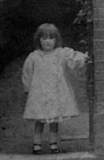Margery Allingham is pre-eminent among the writers who brought the detective story to maturity in the decades between the two world wars. She created an aristocratic, unassuming detective called Albert Campion, who matured from “just a silly ass” of the 1920s to an eminent intelligence veteran forty years later. He ranks high among the great detectives of fiction but does so unobtrusively, disdaining self-advertisement. Other recurrent characters contribute richly to the Campion series: Campion’s wife, Amanda; his manservant, Lugg; and his police associates, Stanislaus Oates and Charlie Luke. The novels and stories in which they appear are among the most distinguished in the genre – vivacious, stylish, observant, shapely, intricate and witty. They are unfailingly intelligent and imaginative, even when they do not wholly succeed.
Allingham regarded the mystery novel as a box with four sides – “a Killing, a Mystery, an Enquiry and a Conclusion with an element of satisfaction in it.” Once inside the box, she felt secure: the genre gave her the discipline she felt she needed, while allowing her imagination full play to provide the “Element of Satisfaction.” This she abundantly did from her first crime novel in 1928 to her last in 1968.
Margery Louise Allingham was born in Ealing, a western suburb of London, and not, as one of her dust jackets claims, in “the old house in the wilds of Norman Essex” in which she was raised. She was the first child of two cousins, Herbert John Allingham and his wife, Emily Jane (Hughes) Allingham, whom she later described as “second generation London Irish,” pink in their political sympathies. Both parents were writers, carrying on a strong tradition that flourished in their family for four generations. Herbert Allingham edited the Christian Globe, a non-conformist weekly owned by his father, and also ran the London Journal, before he abandoned journalism to become a prolific freelance pulp-writer for both children and adults. His wife sold stories to women’s magazines, and her sister, Maud Hughes, founded and edited Picture Show, a successful film magazine.
Herbert John Allingham’s decision to give up journalism came soon after his daughter’s birth, and she was only a few months old when the family moved from Ealing to Layer Breton, a remote village southwest of Colchester, on the edge of the Essex marshes. Here they lived in a Georgian rectory that became open house to a circle of writers and journalists; and here Margery Allingham began writing, earning her first fee at the age of eight for a story published in one of her aunt’s journals.
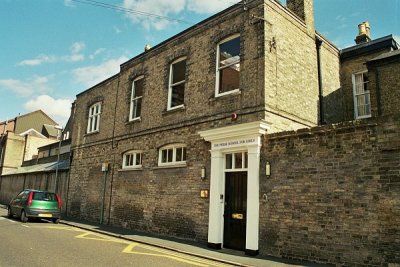
Perse School, Cambridge
© Lesley Simpson
Allingham wrote steadily through her school days, at first in Colchester and later as a boarder at the Perse School for Girls in Cambridge, where she wrote, produced, and performed in a costume play. After her return to London in 1920 she enrolled at the Regent Street Polytechnic, where she studied drama and speech training in a successful attempt to overcome a childhood stammer. Here she wrote the verse play Dido and Aeneas, which was performed at St. George’s Hall and the Cripplegate Theatre; Allingham played the leading role, and the scenery was designed by Philip Youngman Carter, whom she would marry in 1927.
The Allinghams retained a house on Mersea Island, a few miles from Layer Breton, and here Margery Allingham found the material for her first novel, the adventure story Blackkerchief Dick (1923) which was published when she was nineteen. Two years earlier she had participated in a series of séances, during which messages ostensibly from seventeenth-century pirates and smugglers were received. Long afterwards her husband maintained that these occult communications were “entirely the product of Margery’s dynamic imagination,” so that Blackkerchief Dick is wholly a work of fiction and not, as was originally claimed, a fictional rendering of a true story transmitted from beyond the grave. Whatever its origins, it was warmly received: the Bookman for October 1923 welcomed a “thoroughly entertaining” story, written “with an ease and finish given to few young writers.”
Besides Dido and Aeneas, Allingham wrote other plays: Water in a Sieve, a one-act comedy published by French in 1925, and Without Being Naturally Qualified (unpublished). The title of the latter was based on a quotation from George Bernard Shaw, who responded with detailed criticism when she sent him a copy. She was also persuaded by her father to write a serious novel about the bright young people of the 1920s, but she found herself frustrated by the tension between her natural gaiety and the earnest intensity of her theme, and the book was never published.
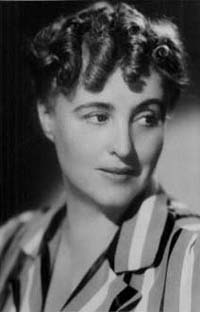
Margery in 1940
As a result of this failure, Allingham decided to ‘escape into the Mystery,’ which she felt was ‘at once a prison and a refuge’ to a writer unsure of her aims but confident of her powers. The White Cottage Mystery was her first essay in detection, written as a serial for the Daily Express in 1927 and published as a book by Jarrolds a year later. It was an auspicious debut, confident in narrative, effective as a mystery, and with a remarkably bold conclusion. The victim is a sadistic brute whose death is investigated by an elderly Scotland Yard Inspector called W.T. Challoner. His son is at hand when the corpse is discovered, and when the trail leads to France, they follow it together. At the end W.T. throws up the case, revealing the truth and the clue that led to it only after seven years have passed.
In 1929 Albert Campion made his debut as a minor character and, for a time, a suspect in The Crime at Black Dudley (1929; published in the United States as The Black Dudley Murder, 1930), a melodramatic novel that is effective in atmosphere but less secure in its handling of the detective element. Campion’s noble lineage, vacant look, and, most significantly, his characteristic modesty, the unassuming stance that he never abandons in all his eventful career, are quickly established.
Throughout the 1920s and 1930s Allingham found it necessary to write in other fields to make her living. Since her books were ‘not then all that profitable’,’ she worked hard to earn time for the writing she really wished to do. In her preface to The Mysterious Mr Campion (1963) she distinguishes between her ‘right hand writing,’ which she did for pleasure and creative satisfaction, and her ‘left hand writing,’ which was commissioned and subject to editorial supervision. In the early years of her marriage she was producing ten thousand words a week, shaping the plot of a film into a story for The Girl’s Cinema, another of her aunt’s papers. Later the left-hand work became more congenial and less of a chore. She wrote magazine fiction for Lord Northcliffe’s Answers, in the tradition of her father. At a more sophisticated level, she produced a series of Campion stories for the Strand Magazine, nine of which were later collected with other stories in Mr Campion and Others (1939). They are elegant little puzzles with a high degree of finish, and it is perhaps significant that Lugg, who is not known for his polish, is replaced in these stories by an anonymous manservant. From 1937 to 1944 Allingham also wrote for Time and Tide in a conscious attempt to widen her range. Though most of her contributions are reviews of current novels, she also wrote an occasional light essay.
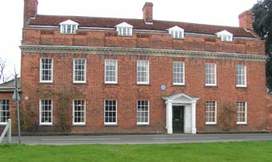
D’Arcy House, Tolleshunt D’Arcy, Essex
© Chris Willis
The right-hand books were written in the country. Mystery Mile (1930) at Letheringham in Suffolk; Sweet Danger (1933) at a rented house in Chappel, in Essex, the model for Pontisbright, the novel’s setting. London was for left-hand work only, and though the Carters maintained a London base at 91 Great Russell Street, they lived in the country by preference. Allingham regarded herself essentially as a countrywoman, exiled in the city; from 1934 she and her husband made their permanent home at D’Arcy House in Tolleshunt D’Arcy, five miles from Layer Breton.
After the three apprentice novels, Allingham’s work found a stylish assurance that never left her. Her powers were steadily developing throughout the 1930s, which she began with Mystery Mile, an engaging light adventure novel, and crowned with The Fashion in Shrouds (1938), at once an incisive comedy of manners and a complex crime puzzle. Seven other novels and two collections of stories also appeared during the ten years leading up to the outbreak of World War II.
The Crime at Black Dudley established a pattern for Mystery Mile, Look to the Lady (1931; published in the United States as The Gyrth Chalice Mystery ), and Sweet Danger (published in the United States as Kingdom of Death ). In all four of these novels the corpses are incidental. Though violent deaths occur, they do so only on the periphery of the action, while the main concern of those involved is to retain or gain possession of something precious. These early novels were assembled on what the author called the Plumpudding principle, whereby inventive action takes precedence over reasoned restraint. They are high-spirited larks, crammed with improbable incidents and eccentric characters, all set against the traditional idyllic landscape of a timeless England. Look to the Lady is especially rich in fantastic detail: the Gyrth Chalice has a legendary guardian that proves to be truly awe-inspiring; and gypsies, a bald witch, and a maddened mare add to the excitement. Despite the author’s contention that the Plumpudding procedure is ‘no construction at all,’ these early books in fact benefit from the long apprenticeship. Sweet Danger is especially well made, with two distinct lines of action that converge in a vivid total denouement.
Campion is promoted in Mystery Mile from minor zany to principal knight-errant, a status he retains for the rest of his career, which comprises seventeen more novels and some thirty stories. This book is also notable for the introduction of two of his chief henchmen, the old lag Magersfontein Lugg, and the dependable policeman Stanislaus Oates. Lugg is a marvellous ‘character’ in the sense of an exaggerated personality that operates on a level of engaging fantasy rather than stern reality. Allingham felt the need to comment on his role and to justify his failure to age over the years, as most of her characters do. She saw him as the personification of Campion’s sense of humour, an essential extension of his employer’s more seemly persona, with a force beyond his basic humanity that frees him from the need to age. In fact, cerebral justification of Lugg is unnecessary, since the books would be immeasurably the poorer without him.
Lugg is a former cat burglar who has lost his figure (‘a hillock of a man, with a big pallid face which reminded one irresistibly of a bull terrier’) and now functions improbably as Campion’s manservant and self-appointed censor, mournfully enlivening his employer’s routines with caustic observations on current circumstances and bodeful predictions for the future. His relationship with Campion is a dazzling variation on the traditional interdependence of master and man, established largely through entertaining dialogue that allows their deep mutual affection to emerge through the veil of derision thrown over it. As a result, Lugg can function as a genuine aide when the need arises (in Traitor’s Purse, 1941, for instance). Much of his charm derives from his speech, an offhand basic Cockney with baroque flourishes that lift it clear of any actual utterance known to man. His later career is documented as the series progresses: his night in the wood in Look to the Lady, his narrow escape from death in The Case of the Late Pig (1937), his stint as a butler in Dancers in Mourning (1937), his book of quotations in The Fashion in Shrouds, his war effort in Coroner’s Pidgin (1945), and his reprieve from dismissal in More Work for the Undertaker (1948).
Oates is less flamboyant, particularly in the earlier years, where he makes the mistakes and Campion corrects them. Only in the later books does he come fully into his own: and in Cargo of Eagles (1968), where he holds court in the basement of the ultimate in reactionary London clubs.
Sweet Danger also introduces the Lady Amanda Fitton. She too, is an essential element in Campion’s armoury, quite apart from the fact that she finally resolves his sexual tensions by marrying him. As Lugg is his humour, so Amanda is his yardstick, his judgement and sense of proportion: she helps to define his insights, direct his thoughts and decide his courses of action. She is eighteen, a redhead with honey-brown eyes and a triangular smile, radiating youth, intelligence, health, and beauty. She has mechanical skills rare in one of her age and sex, an expertise in electricity that makes her a God-given ally in the Pontisbright treasure hunt. Her spirit is indomitable, her gaiety infectious, her loyalty unquestionable, her resource unfailing: ‘eager generosity’ is ‘her mainspring’. Sweet Danger ends with an unconventional love scene in which Campion agrees to wait until Amanda is ready to come to him. On her next appearance, in The Fashion in Shrouds, the agreed years have passed, and she is twenty-four, a valuable member of the Alandel aeronautics team, with the look of ‘a Botticelli angel’ and a boundless enthusiasm for her work that makes Campion, at thirty-eight, ‘aware of a chill’ at his distance from her world of young ideals and endeavours. The sequel here to their odd, yet tender, love scene in Sweet Danger is a mock engagement that is broken spectacularly for reasons that do not become clear until later; when we next meet them in Traitor’s Purse, they are genuinely engaged, but Campion is suffering from amnesia and uncertain what their relationship is. Only in the later novels are we given any indication that they are capable of a deep emotional commitment to each other, and then only obliquely in the pain that Campion involuntarily causes Amanda. However, the end of Traitor’s Purse does resolve their emotional difficulties, after a complex sequence of doubts and misunderstandings. Though Campion’s civilised inhibitions still bedevil his emergence from his amnesia, the sight of Amanda is sufficient to shock him into full awareness of how great his loss would be were he to let her go. Finally, he simply claims her, feeling for ‘the first time in his life… completely adult. His hesitancy, his qualms, his intellectual doubts seemed suddenly the stuff of childhood.’ Later books focus on widely differing stages in the development of their marriage, notably Campion’s comic first encounter with his infant son Rupert and the panic that engulfs him when Amanda comes dreadfully close to being stabbed to death (again, perhaps, he values her most when he thinks he might lose her).
In a brief preface to Death of a Ghost (1934) Allingham draws a distinction between the early adventures of ‘frankly picaresque’ character and the ‘less highly coloured but even more grave difficulties’ which were to engage Campion in his more mature years. The herald of the new era is Police at the Funeral, which was published in 1931, two years before Sweet Danger brought the first phase to a close. It is a model detective story, elegantly written, cunningly wrought, and rich in character and atmosphere. Here Campion is properly subdued to a daunting new environment, a sombre Cambridge household under the thumb of an implacable old widow. Nothing in the earlier books suggests the range and intensity of characterisation which the author now reveals. Uncle William Faraday is a comic humbug in the tradition of Falstaff, forever disclaiming his actual frailties while protesting virtue where none exists. Simultaneously Allingham exposes the sly sadism of his dead cousin through a series of eerie retrospective insights into a truly ugly nature.
Three years later Death of a Ghost confirmed the promise of its predecessor and again showed Allingham extending her range, this time among a colony of artists in London’s Little Venice. The novel is only in part a whodunit, since the killer’s identity is established well before the end. The closing chapters constitute a coda to the main action, with Campion risking his life to coax the killer into the open, successfully, but with a shocking outcome. He is challenged here as never before and feels his way to the killer’s identity by an intuitive process culminating in ‘what he could only regard as a species of revelation.’

Philip Youngman Carter
Flowers for the Judge continued the line of cultural mysteries. It is a far more uneven performance, occasionally uncertain in tone and with a dispiriting wash of sentiment laid over certain scenes and characters. Two lines of action converge on the publishing firm of Barnabas in Holborn, where a disappearance develops into a death. Campion’s dual investigation seems curiously detached from the central development, whereby the law moves ponderously against the wrong man. A contrasting lightness distinguishes The Case of the Late Pig, in which Allingham’s ‘attempt to combine Mr Campion’s newly acquired responsible mood with his earlier light-hearted adventures’ resulted in one of her perfect books. Campion tells the story himself, in a blithe, easy style reminiscent of P.G.Wodehouse. The action, too, has convolutions worthy of the comic master, but the sinister gaiety Allingham achieves is all her own.
As further evidence of her expanding powers, she produced in the same year her most ambitious novel to that date, Dancers in Mourning. The action centres on Jimmy Sutane, the star of a revue based on the alleged memoirs of William Faraday, known as Uncle William. A campaign of persecution is in full swing against Sutane, and an addition to the cast of the show seems ill-judged and therefore inexplicable. Campion is present when the first death occurs, and he and Uncle William remain on hand to observe Sutane and his entourage. But Campion is no longer a neutral observer: a sudden passion for Sutane’s wife overwhelms him, eroding his detachment and clouding his judgement so that he fails to discern the killer’s identity until very late in the day. Every development in the case is scrupulously rendered in terms of human personality, and the narrative is deeply satisfying as an illumination of character and as a complex murder story.
The Fashion in Shrouds, which followed a year later, is even more impressive as a demonstration of Allingham’s contention that a sophisticated crime story may coexist in the same narrative with an incisive novel of manners. Her special concern here is to reinforce the traditional view that the sexes are interdependent and the only proper ‘human entity’ is ‘a man and a woman.’ Two eminent career women demonstrate the point: Campion’s sister Val, a dress designer, and Georgia Wells, an actress. For all their success, they cannot overcome ‘the dreadful primitive weakness of the female of any species.’ They discover this truth while deeply involved in an intricate murder mystery set against an elegant background of haute couture and high living. Georgia is the pivot on which the double action turns: the emotional tensions arise from her decision to annex Val’s lover, and the murders occur because the victims loved her enough to marry her. Val and Georgia dictate the style of the novel, which faithfully reflects their self-conscious cleverness and occasional tendency to go too far. Allingham later acknowledged that the book was overwritten and trimmed it for inclusion in a 1965 omnibus.
When the war came in 1939, Allingham was well on with Black Plumes (1940), her only mature novel to exclude Campion. Though she finished the book more quickly than she had intended, it shows no sign of haste: the action moves with stately menace toward a vivid climax, in which both killer and murder weapon are spectacularly revealed. Instead of Campion, the investigator is Bridie, a soft-spoken man from the Orkneys, over whose ‘small steady eyes’ wool is not easily pulled. In ambience and tone the novel recalls Flowers for the Judge ; in both books the mystery threatens a close-knit family firm beset by suspicion and fear when a partner is murdered.
Allingham’s next books were written while Britain waited to be invaded. Essex, facing the Low Countries across the North Sea, must have seemed especially vulnerable, and Allingham flew the flag at home with exemplary courage and determination while her husband was serving abroad. She became involved in Air Raid Precautions work, served as First Aid Commandant for her district, and organised the billeting and care of evacuees from London. She was also set to function as the local agent of a British Resistance, should such a movement have become a reality. D’Arcy House became a temporary military base for eight officers and two hundred men of the Cameronians. Weapons and explosives were stored in the grounds and emergency food supplies in the garage.

Dustjacket by
Philip Youngman Carter
As the range of her activities indicates, the war stirred deep feelings in Allingham, and they were expressed in her writing. A letter from Allingham’s publisher in Time and Tide, July 1949, reads like a rallying cry, confirming her faith in the individual’s passion for all that he holds dear as the essential feature of the nation’s strength. In 1941 she published The Oaken Heart, based on letters written to American friends and shaped into a book at the suggestion of Doubleday, her American publisher. Under a light disguise of fiction, it records the life of D’Arcy House and its neighbourhood as they adapted to war and the threat of invasion. The book was intended to stir America into joining the Allies in the fight against Germany. In Traitor’s Purse, published the same year, Campion finds himself driven by ‘a deep and lovely passion for his home, his soil, his blessed England.’ As a novel, Traitor’s Purse is taut and feverish, with insistent tensions all converging on Campion. He is in an appalling situation: he alone holds the key to Britain’s salvation, but a blow on the head has routed his memory. Much of the novel’s fascination lies in Campion’s gradual discovery of himself, professionally as a detective and personally as Amanda’s lover.
The next novel, Dance of the Years (1943; published in the United States as The Gallantrys ), was the author’s only attempt at mainstream fiction. Though she was ambitious for its success and had intended it as a full-scale dynastic saga based on her family’s history, it tailed off after a promising start into ‘a precis of a larger scheme.’ The need to earn enough to maintain her home, coupled with the demands made on her by her many responsibilities, caused her to finish the book too quickly.
Her next Campion novel, Coroner’s Pidgin (published in the United States as Pearls Before Swine), showed no decline of powers or diminution of spirits. Uniquely, it was written without the close collaboration of her husband, whose active service kept him abroad during its completion. The earlier action of the book defines domestic tensions among another self-contained smart set, but later developments achieve a larger excitement, grander altogether than what has gone before. The richness and range of the characterisation are remarkable, and there are many intense and memorable moments, not least the macabre opening sequence, in which Lugg and the Dowager Lady Carados manoeuvre a dead woman up the stairs to Campion’s flat.
More Work for the Undertaker appeared in 1948, Allingham apologised in the dedication to ‘all old and valued clients … for unavoidable delay in delivery of goods.’ In fact, the absence of any books since the publication of Coroner’s Pidgin three years earlier marked the beginning of a reduced rate of production that the author maintained for the rest of her life. There were thirteen novels in the fourteen years from 1928 to 1941, but only eight in the twenty-four years from 1945 to 1968.
Of the seven post-war novels, none is richer than More Work for the Undertaker, a consummate entertainment flawed only by a certain lack of definition in the character of the villain. It is an Allingham treasure house, sinister yet festive in atmosphere and alive with wit and fancy. Campion completely outclasses Charlie Luke, the author’s new young policeman, whose ‘pile-driver personality’ nonetheless takes the reader by storm. Equally fine are the undertaker, Bowels, and the Palinodes, the family of bizarre intellectuals around whom the case revolves.
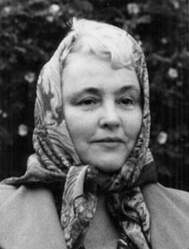
Margery in the 1950s
Allingham’s greatest success came in 1952 with The Tiger in the Smoke, the novel most often named as her best. It is a sombre book, much the darkest in the canon, and though the whodunit element is absent, the level of tension is high. The Tiger is Jack Havoc, a vicious killer on the run in a fog-bound London, seeking the key to a treasure that obsesses him. For the author he is a new departure, ‘the first genuinely evil person’ she had created. Against such an adversary Campion is out of his depth, content to leave the hunt to Luke. At a high point of the action, Havoc is confronted by Campion’s uncle, Canon Avril, in a classic encounter of good and evil. The old priest’s power affects the younger man so profoundly that he finds it, for the first time, less than easy to kill. Canon Avril is the greatest of the novel’s many triumphs, a man for whom God alone can judge the actions of men; others are the Tiger himself, a dangerous animal, vicious from the cradle, and a freakish band of street musicians led by a neurotic albino.
Allingham’s personal favourite among her novels, The Beckoning Lady (published in the United States as The Estate of the Beckoning Lady ), was published in 1955. There are strong autobiographical elements in the narrative: Minnie Cassands is something of a self-portrait, and her husband Tonker is derived from Youngman Carter. The celebration at the Beckoning Lady ‘mirrors something of what a summer party could be like at Tolleshunt D’Arcy,’ and the absurd routines imposed on Minnie by her income tax adviser clearly had their origin in a real-life frustration. The setting is Pontisbright, and Uncle William is, sadly, one of the victims. Campion determines to avenge his old friend, but otherwise this is one of his lightest undertakings. Because it is shaped with a veteran’s craft and concern, the mystery is continually absorbing, but there are many self-indulgent digressions. Charlie Luke suffers a virtual betrayal at his author’s hands: his integrity and force are sacrificed to the prevalent languor, and diffident love reduces him to an abject travesty of his true self.
Hide My Eyes (1958; published in the United States as Tether’s End ) restores him to prominence and to his customary command. Though Campion contributes crucially, and Luke himself shuts his eyes to an essential truth, it is very much his case, built up from isolated details that coalesce in his mind to form a pattern. The action covers a single day in which disparate events interlock in a grim and complex design. Because the pressure does not yield, the excitement is concentrated and continuous. At the beginning of the day Luke broods over the tenuous scraps that might be his evidence, but that night he arrests his man. His quarry is ‘a well trained animal without imagination or moral sense,’ different from Havoc because he is cooler and more calculating. The day through which we follow him finally destroys his image of himself, forcing him to acknowledge his common humanity with the rest of mankind. The action moves with a kind of elementary certainty to a final confrontation between good and evil.
Four years passed before the appearance of The China Governess (1962). One of the author’s most studied and serious works, it combines a characteristic coziness with a harsher awareness of contemporary doubts and tensions. Most of the characters involved are either deceived or deceiving, on a scale that governs their lives. An identity crisis is the core of the action, the need of Timothy Kinnit to learn his true parentage. In the course of his quest, the novel explores heredity, asserting continually that no amount of social conditioning can eliminate inherited traits: Timothy’s heredity declares itself in his looks, his voice, his gestures, and his temperament. The theme of illusion and reality is subtly extended: to a garrulous nanny, whose romantic view of life deliberately excludes unpleasant truths; and to Timothy’s adoptive family, around whom a far-reaching pattern of guilt takes shape.
The Mind Readers (1965) is the last of Allingham’s completed novels; before Cargo of Eagles was finished, she had died of cancer, at Colchester, six weeks after her sixty-second birthday. Though The Mind Readers was comparatively ill received, it has many saving graces: acute intelligence, contagious zest, lavish invention and intense commitment to its unusual theme. The narrative looks confidently to the future, while also harking back to the high exuberance of the early adventure novels. Essentially, this is an escapade, in which sinister powers plot to possess a treasure, while Campion and his henchmen strive to make it secure. The title indicates the nature of the treasure: a device for reading people’s minds, discovered by two of Amanda’s great nephews. Campion, for once, can only watch and wonder – at his own deliverance from imminent death, and finally at the spectacular denouement engineered by the boys. After a tangled action, the novel ends on a clear note of hope. The death of a traitor inspires a patriotic outburst reminiscent of that in Traitor’s Purse, and the spies and schemers who seek to control the devise are wholly confounded.
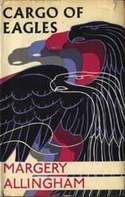
Dustjacket by
Philip Youngman Carter
The publisher’s brief preface to the posthumously published Cargo of Eagles confirms the care and craftsmanship that went into Allingham’s work: the ‘whole fabric’ of the story ‘had been mapped out long before her death,’ so that her husband was able to finish it, as she herself would have done, according to plan. The book has the force and coherence of a unified whole, in no way diminished by the enforced collaboration. The action is set in a dour estuary village called Saltey, in East Anglia, where the locals obstruct authority as a matter of course and wild gangs of teenage ‘tearaways’ roar up and down on motorcycles. For the last time, Allingham absorbs a raw modern phenomenon into the traditional fabric of one of her novels, accurately presenting the ‘ton-up types’ as joyless and destructive, while ensuring that they do not jeopardise the essentially civilised tone of a characteristic Allingham entertainment. For all its surliness, Saltey is Allingham territory, with a picturesque history, a local legend, treasure to be found, and Campion on hand to find it before the enemy. Like everyone else, he follows the signs to the wrong conclusion but recovers to control the final sequence with an assurance matching anything in his long career, literally unmasking the villain and stage-managing the subsequent revelations with a shrewd showmanship calculated to achieve exactly the effects he wants. For Campion, there were to be two more adventures, written by Youngman Carter, but for Allingham this was the end.
Besides her novels, Allingham wrote four novellas and sixty-four stories, published in a wide variety of journals and anthologies. The novellas are more overtly romantic in tone than the novels and exclude Campion. They were collected in two volumes, Deadly Duo (1949; published in the United Kingdom as Take Two at Bedtime, 1950) and No Love Lost(1954). Five collections of Allingham stories appeared in the author’s lifetime, and four more since her death.
Youngman Carter’s touching account of his wife in his preface to Mr Campion’s Clowns (1967) gives a picture of a gay and generous woman, with kindness and courage and a rare gift for friendship. Though not an orthodox Christian, she was ‘deeply religious’ with her own tenets of belief. She was greatly attached to her house and garden and loved to share them with her many friends. Her publicity invariably implied that her marriage was entirely satisfactory but, in fact, it was threatened by her husband’s restless philandering and extreme social ambition. Both took their toll; and continued ill-health and serious tax problems compounded her difficulties. Youngman Carter designed the wrappers for most of her books and he helped to plan some of the earlier ones. After her death he achieved in Cargo of Eagles and his own two sequels a lively pastiche of his wife’s characteristic mode.
In that mode she had ‘precious few peers and no superiors,’ as the Sunday Times once claimed. She remains one of the most diverting and alluring of mystery novelists, zestful in narrative and dialogue, and supremely devious in her designs. She showed acute insight into character, and her books abound in witty and accurate observations of people, with an especially keen eye for an eccentric. Her sense of place carried her with ease from the chic resorts of the beau monde to a desolate island and a reeking dump. She had a vivid vein of fantasy, and very few of her jokes misfire. If the tone falters at times, there are no flat pages: her early training made her incapable of dullness. As a stylist she reached a high level of conscious elegance, from which she moved on to the graceful, pointed precision of her later manner.
Despite family resemblances between one novel and another, Allingham never repeated herself or wrote to a formula. Aware of the need to adapt her work to a changing world, she devised new forms, often taking risks and continually testing her range. She experimented freely, not always with success, but invariably with conviction and intelligence. Always an expert storyteller, she became a true novelist as she matured, refining and deepening her fictions to encompass significant themes, exploring the great abstractions: love and justice, good and evil, illusion and truth. Her work attains classic status and will not be forgotten; not for nothing was she compared to Charles Dickens and Robert Louis Stevenson.

